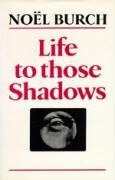Read more
This book examines the chronology of the emergence of what it defines as cinemas Institutional Mode of Representation and the socio-historical circumstances in which this took place. It examines the principles of visualisation--camera placement and movement, lighting, editing, mise-en-scene--that film-makers and audiences came to internalize over the first three decades.
List of contents
Introduction
Charles Baudelaire versus Doctor Frankenstein
Life to Those Shadows
The Wrong Side of the Tracks
Those Gentlemen of the Lantern and the Parade
Business is Business: An Invisible Audience
Passions and Chases-A Certain Linearisation
Building a Haptic Space
A Primitive Mode of Representation?
The Motionless Voyage: Constitution of the Ubiquitous Subject
Beyond the Peephole, the Logos
Narrative, Diegesis: Thresholds, Limits
Conclusion
Bibliography
Filmography
Index
About the author
Noël Burch has exerted an important influence on film studies; he is the author of Theory of Film Practice and To the Distant Observer.
Summary
Presents a critique of 'classical' approaches to film: the assumptions that what we call the language of film was a natural, organic development, and that it lay latent from the outset in the basic technology of the camera, waiting for the prescient pioneers to bring it into being.

